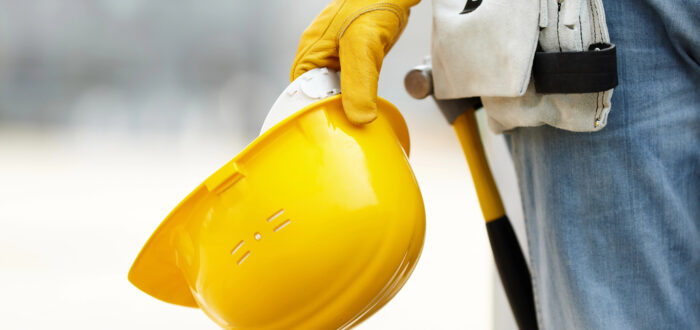Jackhammers drilling into cement walkways, table saws buzzing, dump trucks, and bulldozers moving materials. These are a few examples of the noises construction workers hear every day on their jobs.
Noise may not seem as dangerous as other hazards on construction sites, but it can affect worker safety and health. According to the Centers for Disease Control and Prevention, an estimated 24% of hearing loss in the United States is attributed to workplace exposure. The danger of noise in construction is often overlooked because hearing loss generally occurs gradually.
So, how can you tell if your job site is too loud? What can you do to protect workers’ hearing? Here are a few things to keep in mind.
The Risks
Noise-induced hearing loss (NIHL): NIHL is a hearing impairment resulting from exposure to loud sound. Noise exposure at work which causes hearing loss is called occupational hearing loss. Occupational hearing loss is permanent but preventable.
Sound intensity is measured in decibels (dBA) and the National Institute for Occupational Safety and Health (NIOSH) recommends a limit of 85. It’s possible to develop hearing loss from prolonged exposure to sounds above 85 decibels (dB). A construction site can have noise levels between 80 and 90 decibels.
Tinnitus: Tinnitus is described as hearing a sound when an external sound is not present. It has been characterized by a constant ringing or buzzing in the ears. Noise-induced hearing loss can cause tinnitus. Construction workers are at risk of developing tinnitus, a condition that can be distressing and affect one’s quality of life.
Safety Concerns: Excessive noise can also mask important audible warnings and signals, putting workers at risk of accidents on the job.
Protecting Your Ears
Protecting your hearing in the construction industry is crucial. Fortunately, there are several measures you can take to safeguard your ears while on the job:
Use Hearing Protection: Invest in high-quality hearing protection devices such as earplugs or earmuffs. These should be worn consistently when exposed to loud noises. Make sure they fit snugly and are comfortable for extended use.
Limit Exposure: Whenever possible, limit your exposure to loud noise. Use quieter tools or equipment when feasible, and take regular breaks in quieter areas to give your ears a rest.
Maintain Equipment: Ensure that machinery and tools are properly maintained to reduce unnecessary noise levels. Regular maintenance can help minimize the overall noise output.
Implement Engineering Controls: Employ noise-reducing measures such as sound barriers, acoustic enclosures, or quieter equipment to reduce noise levels at the source.
Education and Training: Train construction workers on the importance of hearing protection and noise awareness. Encourage them to follow safety protocols consistently.
Regular Hearing Tests: Undergo regular hearing tests to monitor your hearing health. Early detection of hearing loss can lead to better outcomes.
Communication: Use hand signals, radios, or other non-auditory methods of communication to convey important information on noisy construction sites.
Protecting your hearing in the construction industry is not just about personal comfort; it’s about safeguarding your long-term health and well-being. Noise-induced hearing loss and related conditions can have a profound impact on your life, both personally and professionally.
By understanding the hearing hazards specific to the construction industry and implementing the recommended protective measures, you can enjoy a fulfilling career in construction while preserving your hearing health.
Need Help? Have a Question? Contact Us Today!
At the Regional Hearing & Balance Center, your health and well-being are our top priority. If you have more questions or concerns about the noise level at your job site don’t hesitate to reach out to our expert team. Call us at 208-497-3596 or click here to book a complimentary hearing assessment.


Recent Comments